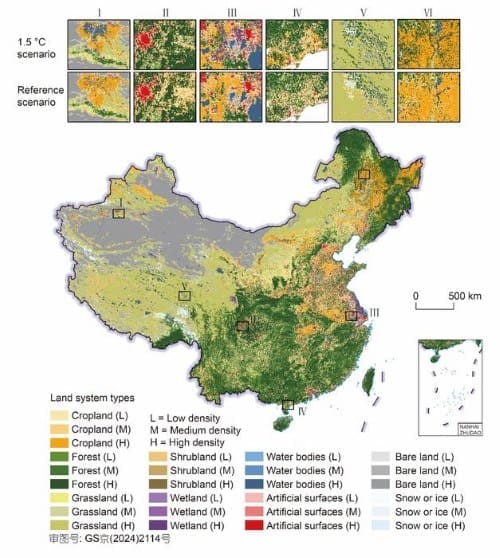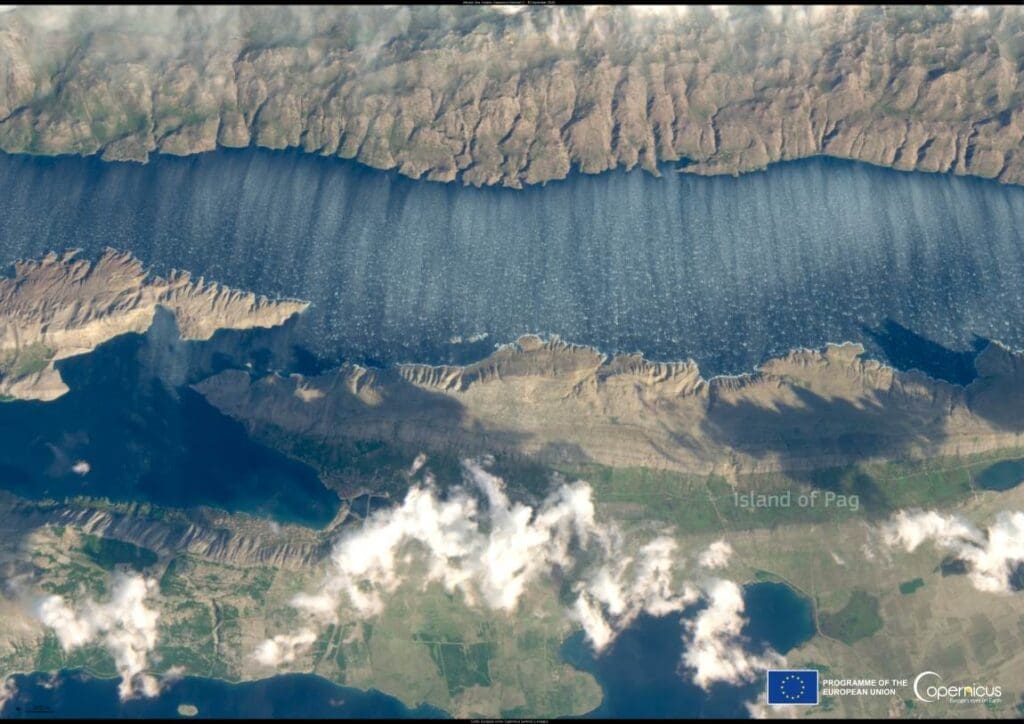Summary:
If global climate pledges succeed in limiting warming to 1.5°C by 2100, China’s land systems will undergo major transformations, particularly in forests, wetlands, and croplands.
A study published in Science China Earth Sciences examines how these changes will unfold using advanced simulations. Researchers from Beijing Normal University integrated the Global Change Assessment Model (GCAM) with an improved CLUMondo model to predict land system shifts under a 1.5°C warming scenario.

The study found that forest, wetland, and shrubland areas are expected to expand significantly, with wetlands growing by 79% and forests by 33%. However, cropland faces sharp declines, with up to 35% of existing farmland converted into other land types, particularly in key grain-producing regions.
This shift raises concerns for food security, highlighting the need for updated cropland protection policies. The researchers emphasize that these insights can inform climate adaptation strategies and sustainable land management in China.
By offering a higher-resolution analysis than previous studies, this research provides a detailed look at how land systems will respond to global climate action.
What changes will occur in China’s land systems if the 1.5°C climate pledges are fulfilled by 2100?
Global warming has become an urgent, shared challenge for humanity, with far-reaching consequences: a dramatic decline in biodiversity, disruptions to ecosystems, threats to food security, and potential instability in both socio-economic systems and ecological safety.
In response to this looming crisis, countries participating in the 26th Conference of the Parties to the United Nations Framework Convention on Climate Change (COP26) in 2021 made significant climate pledges. Their collective goal is to limit the rise in global average temperatures to below 1.5°C by 2100.
These climate pledges will have profound and cascading impacts on land systems across the globe. So, what will these changes look like in China’s land systems if the 1.5°C global warming pledges are fulfilled by the century’s end? A team of researchers from the Faculty of Geographical Science at Beijing Normal University has sought to answer this question through their latest study.
The research team produced a comprehensive dataset with a thematic resolution of 27 types of land systems, including nine basic land types (cropland, forest, grassland, shrubland, wetland, water bodies, artificial surfaces, bare land, and snow/ice) combined with three local density types (low, medium, high). The researchers then mapped the output of land types by the Global Change Assessment Model (GCAM) onto four demands for land system services.
Coupling these with the improved CLUMondo model to simulate China’s land system changes in 2100 under a 1.5°C global warming scenario, and comparing it with a reference scenario without updated emission reduction measures. The method of integrating the GCAM and the improved CLUMondo model proved to have a high validation accuracy in simulating changes in China’s land systems.
The team’s in-depth analysis of the simulation results revealed promising trends: Under the 1.5°C global warming scenario, the quality of ecosystems associated with mountains, water bodies, forests, croplands, lakes, and grasslands in China is projected to improve. The areas of shrubland, wetland, and forest systems are projected to increase by 185%, 79%, and 33%, respectively, with low-density shrubland, high-density wetland, and high-density forest showing the most significant increases.
Compared with the reference scenario, the 1.5°C climate pledges drive greater changes in China’s future land systems, with wetland and forest area growth levels exceeding those of the reference scenario by 20% and 10%, respectively. Notably, significant shifts will occur in cropland and grassland areas in China’s southern and coastal regions, along with changes in wetland areas along China’s eastern coastline and in the South China coastal zone. These changes highlight the urgent need for enhanced protection and management of these land types.
The most significant difference between the 1.5°C global warming scenario and the reference scenario is the potential loss of cropland. It is estimated that 35% of the existing cropland (as of 2020) will be converted to other types by 2100 (or earlier), with high-density cropland decreasing by nearly 50%. This shift will pose a serious challenge to food security. Cropland will primarily be converted to wetlands and forests, mainly in grain-producing regions such as the Sichuan Basin, North China Plain, and Northeast Plain.
“Under the 1.5 °C climate pledges, policies for cropland protection and food security should be updated, with a focus on monitoring cropland loss-prone areas, improving cropland quality, reasonably assessing China’s future food demand from the national supply side, and optimizing cropland resource allocation and management,” the authors emphasized.
Compared with other similar studies, this study explores the long-term impacts of 1.5°C global warming climate pledges scenario on China’s land systems. The study is superior to traditional land use/cover simulation studies by factoring in the complex many-to-many relationships between land system service demand and land service supply. Furthermore, the thematic resolution of the land system data used is also higher, providing a more comprehensive reflection of the fine-scale response of China’s land systems under the 1.5°C global warming scenario.
These findings offer critical insights for better understanding and managing the challenges climate change poses to land systems, which is highly important for proposing measures to mitigate climate change risk and promote sustainable development in China.
The first affiliation of this study is the State Key Laboratory of Earth Surface Processes and Resource Ecology at Beijing Normal University. Lv Jiaying, a master’s student from Professor Song Changqing‘s team at the Faculty of Geographical Science, Beijing Normal University, is the first author of the study, and Associate Professor Gao Peichao, a young teacher of the team, is the corresponding author.
***
This study was supported by the National Natural Science Foundation of China (Grant Nos. 42230106, 42271418, 42171088 & 42171250), and the research team will continue their work on land system changes simulation to more accurately predict the changes and cascading effects of land systems under the background of global climate change.
Journal Reference:
Lv, J., Song, C., Gao, Y. et al., ‘Simulation and analysis of the long-term impacts of 1.5°C global climate pledges on China’s land systems’, Science China Earth Sciences 68, 457–472 (2025). DOI: 10.1007/s11430-023-1501-9
Article Source:
Press Release/Material by Science China Press
Featured image credit: Xenofan 凡 | Pexels




